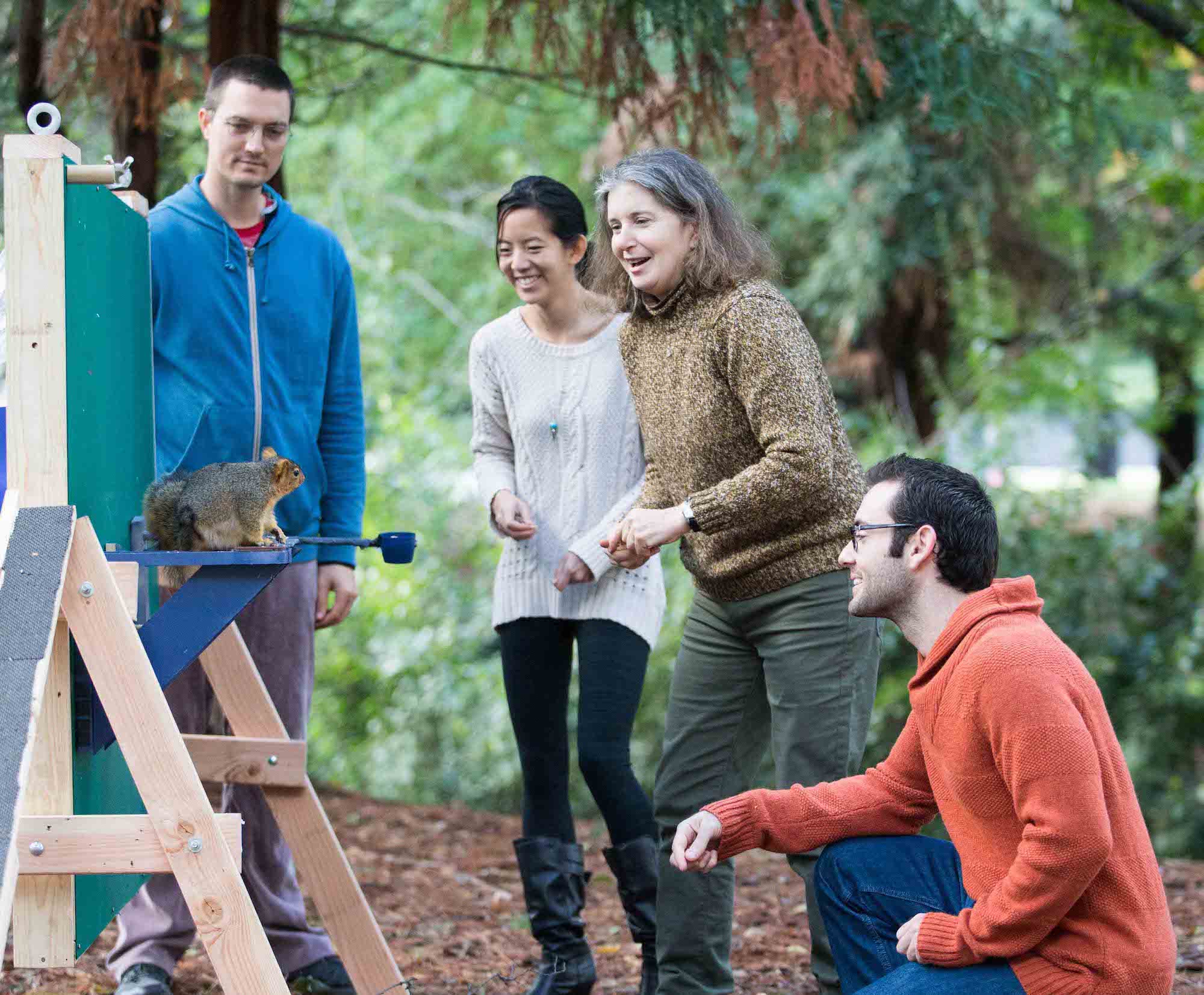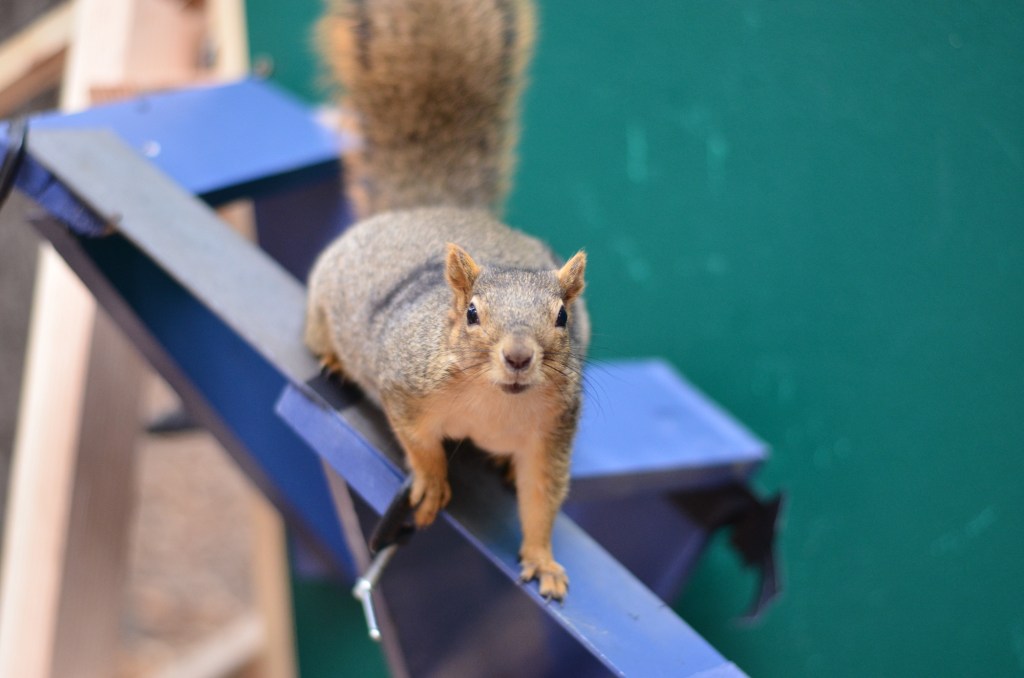For squirrels, the ability to leap from one tree to another on branches that bend and flex is less about precision and much more about adaptability.
They’re not as worried, for example, about landing a jump on all four paws, and a lot more focused on sticking one or two body parts and assuming the rest will follow. Squirrels are also capable of changing course mid-jump and making split-second decisions about how far to leap depending on the strength of a branch.
At least, that’s what former University of California Berkeley researcher Nathaniel Hunt and a team found after years of studying fox squirrels near campus.
Their results include the use of human athletic terms like parkour, an action much more associated with the X Games than squirrels. And it makes sense, since an average squirrel’s agility would make even the world’s best human athlete jealous.

The findings not only help explain feats of squirrel acrobatics, they also lend some insight into a future of more agile robots.
“Our analysis of squirrels’ remarkable feats can help us understand how to help humans who have walking or grasping impairments,” writes co-author and Berkeley psychology professors Lucia Jacobs. “Moreover, with our interdisciplinary team of biologists and engineers, we are attempting to create new materials for the most intelligent, agile robot ever built – one that can assist in search-and-rescue efforts and rapidly detect catastrophic environmental hazards, such as toxic chemical releases.”
For Jacobs, who has been studying the psychology of squirrels for 40 years, the study further proves the intelligence and quick decision-making of one of the world’s most-viewed mammals.
Biomechanics of the Wild
Hunt began this study from a different place than most wildlife researchers. He studied physics and computer sciences before his PhD at Berkley studying comparative biomechanics – basically, what humans can learn from the way animals move.
The American cockroach, for example is likely one of the fastest animals on the planet proportional to its body size. The cheetah may win for actual speed, but make a cockroach into the size of a cheetah and it may not be close. The cockroach has its specially designed legs to thank.
Then there are gecko feet, complete with a singular material and geometry that allows them to stick to surfaces sideways and even upside down.
Hunt’s inspiration for this study came from the same place as most of us interested in animals: He gawked at them outside.
“I was impressed and dumbfounded they were able to move so fast and leap and make decisions the way they do,” he says. “I was also thinking about tradeoffs in movement performance – how were they so agile and robust, and what can we learn from them?”

Jumping for Peanuts
Hunt and colleagues – who included fellow Berkeley graduate student Judy Jinn – knew understanding and manipulating squirrel movement in the wild required more than video cameras in the tree canopy. So they crafted a magnetic climbing wall equipped with its own launch pads and branches to lead squirrels into certain moves and jumps.
Multiple times a week over the course of three summers, they wheeled the contraption into the woods and waited for the squirrels to appear. If a squirrel made it to the landing perch, it received a peanut.
“Sometimes we were surrounded by a dozen squirrels ready to jump up and do this task,” Hunt says. “They were highly food motivated and highly trainable.”
The researchers would randomly change a platform’s height, distance, and springiness to better simulate the unpredictability of trees and branches in a forest. Hunt and others quickly realized that before each jump, squirrels calculated distance based on the sturdiness of their launch spot. The more flexible the branch, the quicker the squirrel would jump, sometimes at distances three or more times their own body length. The sturdier the branch, the closer to the edge the squirrel would leap.
Researchers then assumed that squirrels cared the same amount about flexibility as they did distance. “We were wrong,” the authors write. “Our model showed that squirrels cared six times more about a stable takeoff position than how far they had to jump.”
Then the researchers found the real surprise. Faced with a changing situation such as a bendier branch, squirrels use backdrops like the climbing wall in Hunt’s simulation and trees in the wild to slow their momentum and drop onto their destined landing spot.
It’s the same principle extreme athletes use in obstacle course competitions. Only for squirrels, it’s how they stay alive.
“Trees are challenging because flexibility depends on how far out you are and even if a squirrel is moving through the same trees day after day, the mechanics of the trees can change depending on moisture and age or windstorms,” Hunt says.

Decisions of a Squirrel
The study adds to years of work showing the complex psychology of squirrels.
Researchers have already shown the kind of decision-making squirrels use for rewards, Jacobs says. They categorize nuts, for example, by weight and cluster them in specific places while prepping for winter.
They also spend more time hiding higher-value nuts and will change their behavior while caching if they think they’re being followed. “They live to be 12 years old,” Jacobs says, “and everyone is trying to steal from each other.”
The team then wondered about a squirrel’s ability to learn on the move as it’s seeking food or being chased by a predator. They found it only takes about five jumps to learn that a branch has changed in flexibility and requires different maneuvers.
The kind of brain plasticity required by squirrels may well help researchers studying diseases like Alzheimer’s. And a squirrel’s biomechanics could help revolutionize robotics.
But beyond the scientific implications, work like this further connects people to the sometimes-limited exposure they have to mammals in the wild.
“Squirrels are so familiar and still unknown,” Jacobs says. “And they offer us a daily connection to wilderness, to a wild animal you can relate to because it’s a mammal and fuzzy and cute and is making amazing jumps and outsmarting you on a bird feeder.”




I certainly enjoyed this article as it helps me to understand the antics that go on in my yard with my squirrels. I have various feeding stations and try to provide enrichment for them as well. I find that providing the squirrels with their own food like peanuts in the shell, peanut butter stations, etc., the birds and squirrels get along just find. The squirrels are happy to sit under a sunflower feeder and get the spill overs.